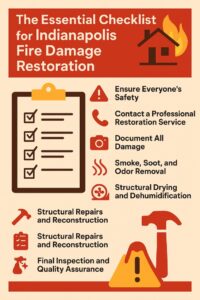I. Introduction
A. Overview of ISO 13485 Certification
ISO 13485 certification establishes the gold standard for quality management systems in the medical device industry. It sets strict guidelines for manufacturers to ensure safety, consistency, and adherence to global regulatory standards. By following this framework, organizations can significantly reduce risks while improving efficiency and product quality. ISO 13485 covers the entire product lifecycle, including design, development, and distribution, making it a vital certification for companies looking to establish a strong market presence.
B. Importance of Quality in Medical Device Manufacturing
Medical devices directly impact patient health, making quality essential. Even minor defects can have severe consequences, including harm to patients and legal repercussions. Maintaining a stringent quality management system (QMS) ensures that each product meets safety and performance standards. ISO 13485 helps companies maintain this high level of quality, reducing the risk of product failures and increasing customer confidence. Adopting ISO 13485 shows a commitment to delivering safe, effective, and reliable medical devices.
II. Understanding ISO 13485 Certification
A. Defining ISO 13485 and Its Core Principles
ISO 13485 focuses on creating a structured approach to quality management within medical device manufacturing. Its core principles include risk management, process control, and continuous improvement. The standard demands that organizations ensure their products consistently meet customer and regulatory requirements. Unlike broader quality management standards, ISO 13485 is industry-specific, addressing the unique needs of medical device production. By aligning operations with this framework, companies can improve operational transparency, reduce errors, and ensure product safety.
B. Global Recognition and Industry Relevance
ISO 13485 is internationally recognized, making it essential for medical device companies operating in global markets. Whether entering the European Union, the United States, or other regions, companies must meet local regulatory requirements. ISO 13485 simplifies this process by harmonizing international regulations, ensuring that certified organizations comply with most global standards. Companies with ISO 13485 certification can easily expand into new markets, enhance their reputation, and foster trust among regulators, customers, and partners alike.
C. How ISO 13485 Differs from Other ISO Standards
While ISO 9001 focuses on general quality management, ISO 13485 is specifically designed for medical devices. It emphasizes risk management, regulatory compliance, and product safety throughout the lifecycle. ISO 13485 requires more stringent documentation and process controls than ISO 9001, especially in areas like design and development. This industry-specific focus makes ISO 13485 more relevant for manufacturers looking to ensure the highest level of safety and compliance in medical devices. Aligning with ISO 13485 ensures that a company’s QMS is optimized for medical device production.
III. Benefits of ISO 13485 Certification
A. Enhanced Product Quality and Safety
ISO 13485 certification ensures that medical devices meet strict safety and quality requirements. This certification enforces stringent checks at every stage of production, from design to distribution. Companies can reduce product defects and enhance reliability by following these protocols. With ISO 13485, manufacturers build trust with customers, regulators, and healthcare providers by consistently delivering safe, effective products. This emphasis on quality also minimizes the likelihood of recalls and legal challenges.
B. Increased Market Access and Credibility
ISO 13485 opens doors to international markets. Many regions, including the European Union and the United States, require ISO 13485 certification or its equivalent to sell medical devices. Holding this certification demonstrates that your products meet global standards, providing a significant competitive edge. Additionally, it increases your company’s credibility with customers, regulatory authorities, and stakeholders. ISO 13485-certified organizations gain access to lucrative markets and secure partnerships that would otherwise remain inaccessible.
C. Streamlined Regulatory Compliance
ISO 13485 helps organizations navigate complex regulatory landscapes. This certification aligns with global medical device regulations, ensuring compliance across different regions. By integrating ISO 13485 standards into your QMS, you reduce the risk of non-compliance and streamline the process of obtaining approvals in various markets. This saves time and resources, allowing businesses to focus on innovation and product development instead of navigating intricate regulatory requirements. ISO 13485 serves as a universal framework for regulatory success.
IV. Key Requirements of ISO 13485
A. Risk Management and Documentation Processes
Risk management forms the backbone of ISO 13485. The standard requires organizations to identify, evaluate, and mitigate risks at every stage of the product lifecycle. This proactive approach ensures that potential issues are addressed before they become critical. Additionally, ISO 13485 emphasizes thorough documentation to maintain transparency and accountability. Companies must maintain clear records for auditing purposes, ensuring that every process is traceable and complies with regulatory expectations.
B. Design and Development Controls
ISO 13485 enforces strict controls over the design and development phases of medical devices. These controls include thorough validation, verification, and documentation of every step in the product development process. Organizations must maintain structured records that demonstrate how devices meet both customer and regulatory requirements. These stringent design controls reduce the likelihood of product failures and recalls, ensuring that devices perform as intended. Regular review of design processes helps companies stay compliant and continually improve their offerings.
C. Supplier Management and Product Traceability
ISO 13485 requires rigorous supplier management to ensure that all components and materials used in medical devices meet quality standards. Companies must evaluate and monitor suppliers to verify their compliance with ISO standards. In addition, ISO 13485 mandates comprehensive product traceability, ensuring that each device and its components can be tracked throughout the supply chain. This level of control enhances accountability and enables swift responses in case of any quality or safety issues.
V. Implementing ISO 13485 in Your Organization
A. Building a Robust Quality Management System
Establishing a strong QMS is crucial to obtaining ISO 13485 certification. Organizations must map out their processes, document every procedure, and ensure that all operations meet regulatory and customer requirements. A well-structured QMS drives efficiency, reduces risks, and guarantees quality across all functions. Focusing on continuous improvement ensures the system evolves to meet the changing demands of the medical device industry.
B. Employee Training and Awareness Programs
Achieving ISO 13485 certification requires more than just system changes; employee engagement is key. Training programs help employees understand the importance of ISO 13485 and their role in maintaining the quality management system. Continuous education ensures that all staff members follow best practices and remain aware of the latest regulatory requirements. Organizations must cultivate a culture of quality, where every employee is committed to upholding the standard.
C. Continuous Improvement Strategies
Continuous improvement lies at the heart of ISO 13485. Organizations should implement regular reviews, audits, and assessments to identify areas for improvement. Corrective actions must be taken swiftly to address non-conformities. By fostering a culture of continuous improvement, companies not only maintain compliance but also enhance their competitiveness. Continuous improvement strategies lead to better efficiency, reduced costs, and a more agile approach to product development.
VI. Certification Process and Timeline
A. Steps to Achieve ISO 13485 Certification
The certification process begins with a gap analysis to identify areas where the organization falls short of ISO 13485 requirements. Next, the company implements the necessary changes, such as improving documentation and training employees. After implementation, an accredited certification body conducts a formal audit to evaluate compliance. Once the organization passes the audit, it receives ISO 13485 certification.
B. Certification Bodies and Auditing Procedures
Organizations seeking ISO 13485 certification must choose an accredited certification body to perform the audit. The certification body evaluates the company’s QMS against ISO 13485 standards, focusing on areas like risk management, process control, and regulatory compliance. Auditors assess documentation, interview employees, and review processes to ensure full compliance. After a successful audit, the certification body grants the organization ISO 13485 certification.
C. Typical Timeframe for Certification
The timeframe for achieving ISO 13485 certification depends on the organization’s size and current level of compliance. For small to medium-sized companies, the process typically takes six to twelve months. Larger organizations may take longer due to the complexity of their operations. The timeline includes preparation, system implementation, audits, and any corrective actions required to achieve full compliance.
VII. Conclusion
A. Summing Up the Importance of ISO 13485 Certification
ISO 13485 certification is more than just a regulatory requirement—it is a pathway to operational excellence, product safety, and market success. By implementing ISO 13485, companies can create a structured approach to quality management, ensuring that their medical devices meet both customer and regulatory expectations. The certification helps businesses reduce risks, improve efficiency, and enhance their overall market competitiveness.
B. Encouraging Manufacturers to Pursue Certification
For medical device manufacturers, ISO 13485 certification is a strategic advantage that should not be overlooked. Companies that achieve this certification gain access to new markets, build stronger relationships with stakeholders, and demonstrate their commitment to quality. ISO 13485 provides a clear roadmap for improving processes and ensuring compliance with international regulations. Pursuing this certification sets organizations on a path to sustained success and growth.
C. Looking Toward the Future with ISO 13485
The medical device industry will continue to evolve, with new regulations and technological advancements shaping its future. ISO 13485 remains the cornerstone of quality management, ensuring that companies stay compliant and maintain the highest standards. Organizations that embrace this certification will be well-equipped to navigate industry changes, remain competitive, and lead in medical innovation. Achieving ISO 13485 certification today sets the stage for a successful and impactful future in the medical device market.









